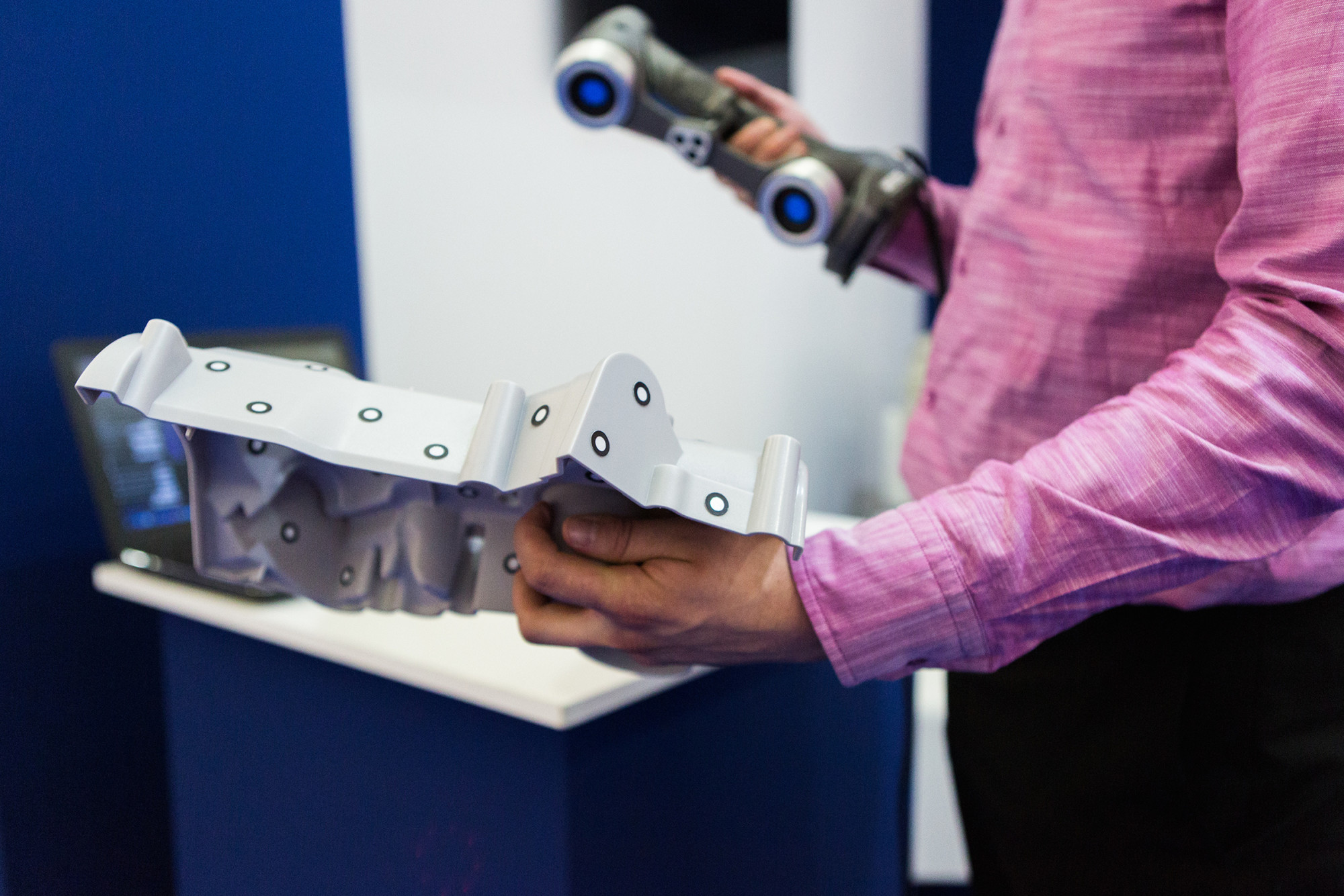They may sound like something straight out of The Jetsons, but 3D scanning technologies are real and here to stay.
Gone are the days when the conventional, 2D laser-jet printer/scanner combo unit was the most innovative tool in the conference room. Today, 3D scanners are changing the game, helping innovators across myriad industries create objects never before thought possible.
Unless you’re intimately familiar with their operation, these machines can be a little intimidating. Today, we’re taking a closer look at how they look and answering some common questions around their use. This can help make the process more approachable, so you’re ready to embrace it when the technology enters your field.
What is 3D Scanning?
In short, 3D scanning technologies are techniques used to capture the shape of a given object using a 3D scanner. When the process is complete, it results in a 3D file of the object. From there, users can save, edit and even print the object as required.
There are three entities that 3D scanners are designed to capture. These include:
- Physical objects
- Environments (e.g. rooms)
- People
If the subject is a human, the process is called 3D body scanning.
As the scanner scans these subjects, it collects data about each one. This can include the color of each subject, as well as its shape. The color surface of each subject is known as its texture.
What Are the Different 3D Scanning Technologies?
There are a few different kinds of 3D scanning systems, and each has its own application and instructions for use. Let’s take a look at five of the most common techniques.
Laser Triangulation 3D Scanners
Along with structured light 3D scanners, laser triangulation 3D scanners are one of the most common technologies in this realm. These scan 3D objects by projecting a semiconductor laser beam onto their surface. From there, they measure how much the laser ray deforms to gather data on its shape.
There are three components that comprise a laser triangulation 3D scanner. These include:
- The laser transmitter
- The camera
- The object to be scanned
Users will place the object on a rotating plate. As it turns, the laser will transmit a rectilinear beam onto the object. At the same time, the camera will measure the deformation of the beam’s line as it impacts the reliefs of the object.
With this data, the scanner can use trigonometry to calculate the object’s position in space.
Structured Light 3D Scanners
A structured light 3D scanner is used to measure how projected light patterns appear on a specific surface. Using a camera system, it measures and tracks the light’s deformation to scan the surface shape and provide intel on its formation.
This type of scanner uses a single light source to project multiple lines on the object.
As the projection occurs, it’s tracked simultaneously by one or more cameras. In this way, structured light scanners operate differently from the laser scanner described above. Instead of lines of light, laser scanner emits laser dots.
Contact-Based 3D Scanners
This type of 3D scanning is also called digitizing and requires the use of physical touch.
A contact-based 3D scanner will hold the object in place, and then use a touching probe to thoroughly examine it. The machine will move the probe around the object’s surface, covering various points and recording 3D information as it does so.
To increase accuracy and precision, the probe may be attached to an articulated arm. This arm can help collect the respective configuration and angles.
Laser Pulse 3D Scanners
Laser pulse 3D scanners are also referred to as “Time of Flight” scanners.
As its name implies, this kind of technology measures the time of flight of a laser beam. As the beam is projected onto a surface, a special sensor collects it. Users can measure the time that passes between the laser’s original projection and final reception to gather important geometrical information.
Photogrammetry
You may also see photogrammetry referred to as 3D scans from photographs or photographies. This approach is useful when you need to construct a 3D subject but you only have 2D captures available (such as physical images).
How does it work?
Photogrammetry leverages computer vision and complex geometry algorithms to create the 3D reconstruction from the original 2D captures. As a result, this type of machine can help create measurements between objects. It can also be used to geometrically represent the objects themselves.
A practical example is map charting. If you wanted to chart a portion of a mountain range, you could cover the physical distance yourself, which could take a very long time. Depending on the terrain, it could even be impossible in some places. Yet, you can use photogrammetry to determine the distance between points.
To do so, you would fly above the range and take a photo of the mountains every few meters. Then, you could analyze the photos using photogrammetry software and triangulate the various photographed locations. This would create a 3D map of the range, and all of the noted distances would be to scale.
Who Uses a 3D Scanner?
Why would someone need to use 3D laser scanning? A few of the people who may need to research the best 3D scanner include those who work in the following industries:
- Automotive
- Aeronautics
- Product design
- Engineering
- Medical
- Dental
- Animation
- Retail
These are only a handful of the niches that currently use 3D laser scanning technology. Moving forward, it is expected that many more industries will follow suit as new applications are discovered.
Leverage the Power of 3D Scanning Today
The same 3D scanning technologies that help automakers and medical professionals are quickly becoming more common in high-tech and forward-thinking business environments.
Is your organization looking to better understand and analyze certain types of subjects, from tiny objects to massive environments? If so, these types of scanners can prove beneficial. Before you make an investment, be sure to do your research and make sure to choose the model that’s the best fit for your requirements.
Looking for more technology news you can trust? Keep reading our blog for all of the updates you need!



